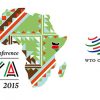(*) Published on 15/1/2016 in Beyondbrics, FT Blog.
The recent inclusion of the renminbi (RMB) in the IMF’s Special Drawing Rights (SDR) is a major victory for the People’s Bank of China, which for years has claimed that the Chinese currency deserves to be in the club of top reserve currencies.
It is also a victory for the Europeans, who after the global financial crisis departed from the tough line advocated by the US, arguing that the RMB should be included in the SDR even though China applies controls on its capital account and intervenes massively in the exchange rate. The view in Berlin, Paris and London is that China has implemented a number of liberalising reforms over the past years, which should be rewarded and further encouraged.
Although the internationalisation of the RMB has developed rapidly since 2009, the fact is that there are a number of institutional factors – the market turmoil at the beginning of 2016 is a symptom of this – that hinder its ascendancy. This is reflected in its limited usage compared to the weight of the Chinese economy, the second largest in the world, and the first in purchasing power parity terms.
“While around 70 central banks have started to hold RMBs in their balance sheets, the RMB represents only 1 per cent of global reserve assets.”
While around 70 central banks have started to hold RMBs in their balance sheets, the RMB represents only 1 per cent of global reserve assets. This makes it the seventh reserve currency, behind the Canadian and Australian dollars. Furthermore, the RMB ranks eighth in terms of international bond issuance and ninth in global currency trading. This means that on the financial track the use of the RMB is still very limited.
The numbers on the trade track are more encouraging. According to Swift, the RMB has overtaken the yen as the fourth most used currency in international payments. This leads Standard Chartered Bank to believe that roughly 25 per cent of China’s trade is settled in RMB. But even here one should treat the figures with caution. Near 80 per cent of China’s trade settled in RMB is done with Hong Kong and, perhaps more importantly, in most international trade contracts the RMB is the medium of exchange and not the unit of account. In other words, the Chinese currency is the means of payment, while the dollar remains the invoice currency, which is much more important because that is where the exchange rate risk lies.
What explains this limited use of the RMB? There are three factors that determine the successful internationalisation of a currency: 1) confidence in the economic and political system; 2) well-developed and open financial markets; and 3) broad transactional networks.
There is no doubt that China excels in the third one. It has eclipsed the US as the world’s largest trading nation. Its immense gravitational pull is especially to be seen in East Asia. As a consequence, the Chinese currency has replaced the US dollar as the main anchor currency for a number of central banks in the region.
However, in the other two factors, China underperforms. Because of its state-led capitalism, based on financial repression, in which state-owned banks provide mainly credit to state-owned enterprises (SOEs), its financial markets are still underdeveloped. Bank credit to the private sector is equal to 128 per cent of GDP. In the US it is only 48 per cent. The Chinese bond market, by contrast, is the equivalent of 41 per cent of GDP, while in the US it is 243 per cent. The same can be said about the stock market, which in the US represents 118 per cent of GDP, and only 44 per cent in China.
“The immaturity of the Chinese stock market can be observed in its volatility.”
The immaturity of the Chinese stock market can be observed in its volatility, which reached unprecedented levels in the first trading sessions of 2016. The average annual turnover of share ownership is 293 per cent, compared with 188 per cent in the US; if we exclude the non-tradable shares of many SOEs the turnover reaches 341 per cent. The general perception is that the Chinese stock market is a huge casino, where insider trading is rampant.
This leads to the first and perhaps most important factor: confidence. For a currency to be highly internationalised, the issuing country must not only have a credible central bank and deep, broad and liquid financial markets, in which securities can be bought and sold with low transaction costs, which necessarily implies an open capital account and full convertibility. It must also have a stable and transparent political and legal framework.
China does not fulfil these requirements (rule by law is not the same as rule of law) and as long as this is the case, the use of the RMB as a reserve currency will be limited. Over the past 200 years the main reserve currencies have been issued by economies that have liberal features. This is valid for the United Kingdom, the US and the eurozone, which currently issues the second most used currency.
While the global financial crisis has undermined confidence in unfettered financial markets, most international investors remain liberal-minded and this means that the Chinese Communist Party (CCP) will need to institutionally transform the role of the state from the main actor to the main regulator of the financial system if its wants to internationalize further the RMB.
As Robert Mundell once said, “great countries have great currencies”. China definitely deserves to have a great currency. But this comes at a price. The CCP would need to give up control of the credit system and, so far, western hopes notwithstanding, there is no indication that this will happen any time soon.
Miguel Otero Iglesias
Senior analyst in International Political Economy at Elcano Royal Institute | @miotei

